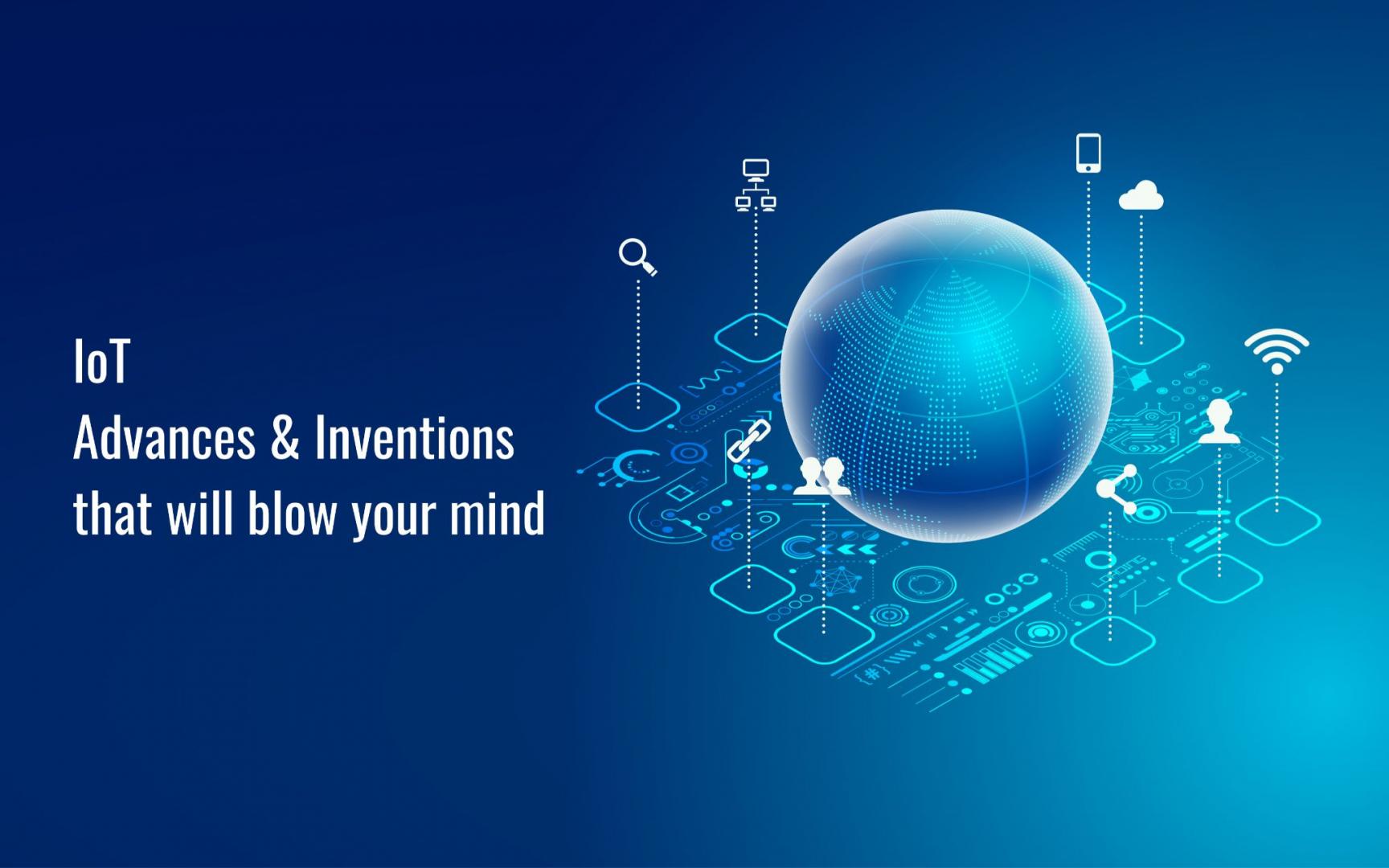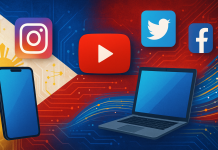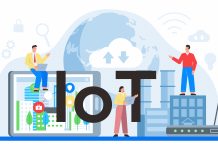The Internet of Things (IoT) idea is based on the connectivity of one product with another, i.e., linking any item or element through the internet. The IoT is based on the idea of enabling items and gadgets in our homes to interact with one another and provide us with data and information about their functioning.
One of the earliest and most obvious benefits of the IoT is home automation. For example, it might instruct the refrigerator to notify us of missing goods when they are ready to expire. In addition, it could instruct the refrigerator to make an online purchase of certain products as soon as they are completed.
Consider a situation in which water sprinklers could detect humidity on the planet and the demand for water-based on the present temperature. Then, if it rains, the windows shut automatically, and if it is hot and sunny, the fans turn on, and the lights turn out on their own. Such is the enthralling world of the Internet of Things!
Latest IoT Inventions
Body Camcorders
Such cameras are becoming an essential component of equipment related to immediate services such as providing an extra layer of protection and insurance. These cameras record real-time, but they can also live broadcast and provide video footage with distant teams due to IoT connectivity. They also often incorporate active GPS, a longer battery life, and secure software. Body-worn cameras capture important information that may be used as proof when required, in addition to serving as a safety measure.
Automated systems
These systems in the sectors of manufacturing and processing are transforming the way equipment and data interact, resulting in quicker and more permanent processes along with safer working conditions, and lower total costs. In addition, because of the increased speed and dependability provided by automated robots and systems, customers are increasingly witnessing quicker processing and period of delivery, altering the B2B and B2C purchasing and experience of delivery.
RFID Technology
RFID technology has transformed how data is automatically captured, monitored, and received when connected to virtually any item. Because RFID “tags” are tiny, inexpensive, and simple to use, they have proven popular in a variety of sectors, including retail, manufacturing, transportation/logistics, and processing, where they have replaced outdated and sometimes unreliable methods of manual calculation and monitoring. RFID improves product visibility by enabling companies to control stock flow, minimize needless expenses, and give correct stock information to consumers by providing information such as location, delivery status, and real-time stock availability. Certain businesses have also used RFID for enhanced theft prevention, helping to decrease the thousands of dollars lost each year due to theft.
Early Warning Systems
Smart technology meteorological sensors, for example, may be installed around cities and other inhabited areas to monitor environmental factors. For example, water and air quality, humidity. noise, wind change, pollen count, temperature and other factors may be considered. The data gathered from these sensors provide authorities with a complete picture by highlighting when dramatic changes in meteorological conditions may occur, enabling them to deploy resources proactively in preparation for a potential danger such as a storm, earthquake or drought. Authorities’ knowledge may also be shared with the public to alert them to potentially hazardous circumstances, allowing them to take action before a catastrophe happens, such as issuing evacuation warnings sooner than previously feasible, saving many more lives possibly.
CCTV Systems
Such devices enable authorities to remotely monitor any place by using several cameras to give a 360-degree view at all times. This aspect of adaptability may be useful in crucial circumstances, such as notifying emergency personnel of the precise location of an event and giving comprehensive data on the incident. In addition to analytical algorithms, AI-enabled CCTV systems offer face recognition capabilities that may identify people of interest to authorities.
Diagnostics for Fault Detection
Fault Detection Diagnostics (FDD) linked with analytical systems may be used inside and outside structures that may be prone to structural damage. The technology may alert engineers whether structural work has to be done before it becomes urgent by sensing unexpected building motions and vibrations.
Smart inhalers
With several other health problems, asthma may have a catastrophic impact on an individual’s lifestyle since its characteristic symptoms like chest tightness could be triggered by ordinary daily activities. Smart inhalers, which use a sensor attached to a pre- existing inhaler and maybe a bluetooth spirometer. These can give us allergen forecasts along with readings of air quality when connected to an application. They can also track the time of medication along with its aptness received and developed to relieve people living with asthma.
Blockchain technology
Blockchain is a technology that enables the production of non-tampered, real-time records and was initially developed as a byproduct of Bitcoin. Though not an IoT innovation in and of itself, we may develop a verifiable, safe, and long-lasting method of storing data. This data is processed by smart devices by integrating Blockchain with IoT. This provides numerous advantages including,
-increased transparency for better analysis
-the ability to identify and address weak spots quickly
-the elimination of human interaction for increased data accuracy and security
-the ability to facilitate automatic “smart contracts” when certain conditions are met and;
-an overall increased layer of security leveraging the strongest encryption standards.
IoT app development
IoT technologies have the capacity to improve our lives significantly. IoT app development may be the next frontier with its revolutionary processing, improved sensors and wireless network technologies (Internet of Things). IoT apps are designed in a way so that they can connect and provide information to billions of ordinary objects.
IoT applications operate on IoT devices and may be tailored to virtually any sector or vertical, such as healthcare, industrial automation, smart homes and buildings, automotive, and wearable technology. In addition, AI and machine learning are increasingly being utilized to create IoT apps to provide devices with knowledge.
IoT applications may be utilized in several ways to help businesses improve, simplify, automate, and control operations while also delivering relevant data, operational efficiency, and even in any environmental conditions that need to be monitored and controlled remotely.
This outcome in IoT technologies will aid in the creation of new IoT apps for new income streams and business models and provide businesses with the real data they need to enhance services and goods.
Conclusion
The Internet of Things (IoT) alters the way we live, work, travel, and do business. It is even the foundation of a new industrial revolution called Industry 4.0 and a critical component of the digital transformation of companies, cities, and society as a whole.
IoT will be a huge phenomenon this year, and the whole idea of the Internet of Things will take on new dimensions and levels. These are just a handful of the many Internet of Things forecasts, innovations, and gadgets anticipated to shake things up.
The next few years will most certainly see many more technological breakthroughs that were previously just a pipe dream. As is customary, the evidence will be in the pie.
The creation of IoT apps will help businesses in several ways. Because of the Internet of Things, we can expect to see substantial advances in mobile app solutions shortly. It is reasonable to expect that today’s mobile platforms and the IoT will combine to provide more secure and efficient mobile solutions.
About the author: Rachita Nayar
Rachita Nayar is a professional writer. She has a penchant for writing and is involved in many projects throughout the world. Currently, she works with a blockchain development company in the USA that allowed her to explore the domain and hone her skills further by learning about blockchain and spreading the knowledge.






